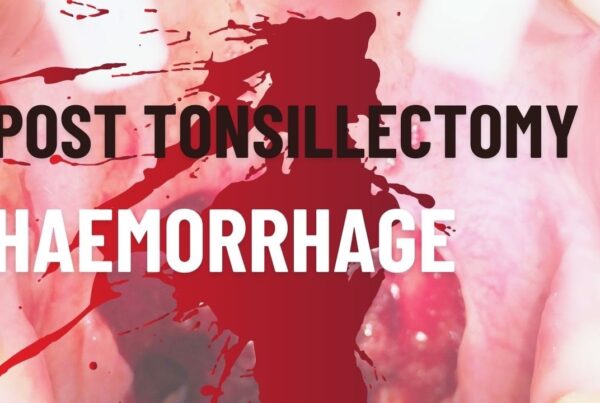A 42 year old male presents following having been punched to the throat.
He is sitting comfortably in a chair, writing in a journal. No-one is really concerned. I’m asked to see him because he has a croaky voice? Hmmmm…I’m interested. On examination there is nothing to find, except his croaky voice. No stridor, nil else. Nothing to see on mouth opening.
He states that the voice change occurred immediately after he was punched to the throat. He has experienced difficulty in drinking water since.
OK, what do you think?
Well, at this point, I was more than concerned, primarily about a fractured larynx. This could be an airway nightmare!
So I called ENT and tried to convince radiology to do a CT. No way, not until ENT have come in. I find it hard to believe how these armchair decisions are made!
Following a look with their scope, the ENT registrar reported a haematoma around the vocal cord, that was obstructing some 70% of the laryngeal outlet.
A CT was then done – yeh! It confirmed an anterior laryngeal fracture and a large haematoma.
These CT’s show, the fractured larynx anteriorly (yellow arrow). The laryngeal inlet is shown and is displaced to the left by a haematoma that is involving the right vocal cord.
The coronal section shows the amount of haematoma circled. This section demonstrates the extent of the involvement.
CT section showing fractured larynx
Haematoma demonstrated
What do we do?
Well firstly, IV and acute bed and start some dexamethazone. Does it help? Can’t hurt and might just shrink something. I gave 8mg and ENT agreed. Steroids are controversial, are thought to retard swelling and inflammation and fibrosis, but only work in the first few days. There is no need for antibiotics, unless the fracture is compound. Also there may be a place for proton pump inhibitors and H2-receptor antagonists.
The management of these patients depends on how compromised the airway is. In a compromised airway, there is a need for immediate control of the airway by way of tracheostomy. Remember that trying to intubate this patient will be very difficult and potentially catastrophic. Remember, there is a large hematoma that is involving the vocal cord and obstructing a significant amount of the laryngo-pharynx and that is the haematoma you may just rupture when attempting to intubate.
Measures have to be taken early to ensure that the airway is controlled. In the event of a compromised airway, a cricothyrotomy is possible, but will result in significant bleeding, that may require open reduction and will potentially be life threatening. This is purely because the haematoma is at the level of the vocal cord and when we are cutting through the cricothyroid membrane, we are just above. This will bleed!
The airway procedure of choice is a formal tracheostomy. This needs the operating theatre.
Irrespective of the patient requiring a tracheostomy, the patient will need layngoscopy and depending on the degree of injury, the patient will need open exploration and open reduction internal fixation of the fracture.
Well, for now, the patient was given the steroids and admitted to High Dependancy, so that he was carefully monitored.
There’s always the surprise ending. As we explained all this, the patient wanted to discharge himself, said he had a busy day the next day. It took some time of explaining just how serious this situation was. Then realisation. “I’m not going home.”
Great case. Remember that some potentially very unwell patients look deceptively well.
Peter Kas











[…] The man with the croaky voice | Resus.com.au | Emergency Medical … […]